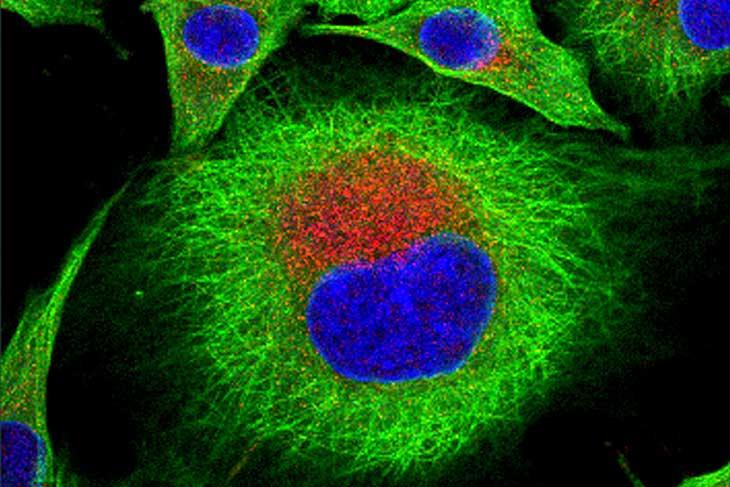Pre-clinical diagnosis could be key to helping control the transmission of foot-and-mouth disease virus (FMDV) in the event of an outbreak, a new study from scientists at The Pirbright Institute and Wageningen Bioveterinary Research has concluded.
Foot-and-mouth disease (FMD) is a contagious viral disease that infects cloven-hoofed (two-toed) mammals such as cattle, sheep, goats, pigs and various wildlife species. The virus is easily spread by direct contact with infected animals or contaminated feed, or indirectly via contaminated objects but can also be airborne. During an outbreak, current control and eradication methods rely on rapid clinical detection and the removal of infected herds.
In this new study, published in the Journal of Clinical Microbiology the Pirbright - Wageningen research team combined their expertise in both FMDV and mathematical modelling to evaluate the methods and effects of preclinical diagnosis during surveillance (as would be in place during an outbreak), in order to reduce the risk of transmission between herds of cattle on neighbouring farms.
Transmission experiments in cattle were used to collect samples taken from individual animals such as blood, saliva and nasal swabs, and at herd level such as air samples, on a daily basis during the course of infection. The sensitivity of each of these types of samples for the detection of infected cattle during different phases of infection was then quantified.
Dr. Simon Gubbins, Head of Transmission Biology at Pirbright said: “Our results were incorporated into a mathematical model for FMDV transmission in a cattle herd in order to evaluate the impact of early detection and removal of an infected herd on the reduction in the amount of infectious output which could enable transmission of the virus to cattle on a neighbouring farm.
“By using weekly surveillance, clinical inspection alone was found to be ineffective at blocking transmission. This was in contrast to the impact of weekly sampling using saliva swabs of at least ten animals per farm or daily air sampling (for housed cattle), both of which were shown to reduce the risk of transmission substantially.”
Dr. José Gonzáles from Wageningen Bioveterinary Research added: “These findings provide a new approach to disease control which could be added to our emergency preparedness programmes. A potential benefit of applying this strategy is a reduction in the number of animals culled unnecessarily, which is likely to happen when traditional strategies such as pre-emptive culling are implemented.”
Following these promising initial results, the Pirbright - Wageningen research team plan to take their approach from the controlled conditions of the laboratory and test it in field trials. If successful, they hope it will help to reduce the social and economic impact of one of the world’s most devastating livestock diseases.
This study was funded by the Department for Environment, Food, and Rural Affairs (grants SE2814 and SE2815) and by the Biotechnology and Biological Sciences Research Council (grant BB/E/I/00001717).
